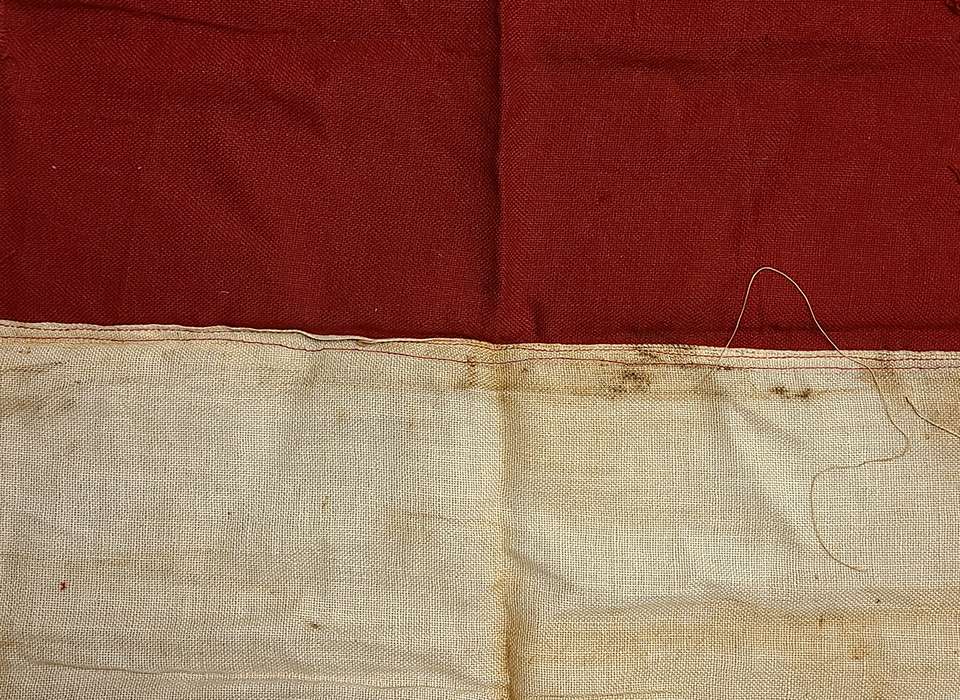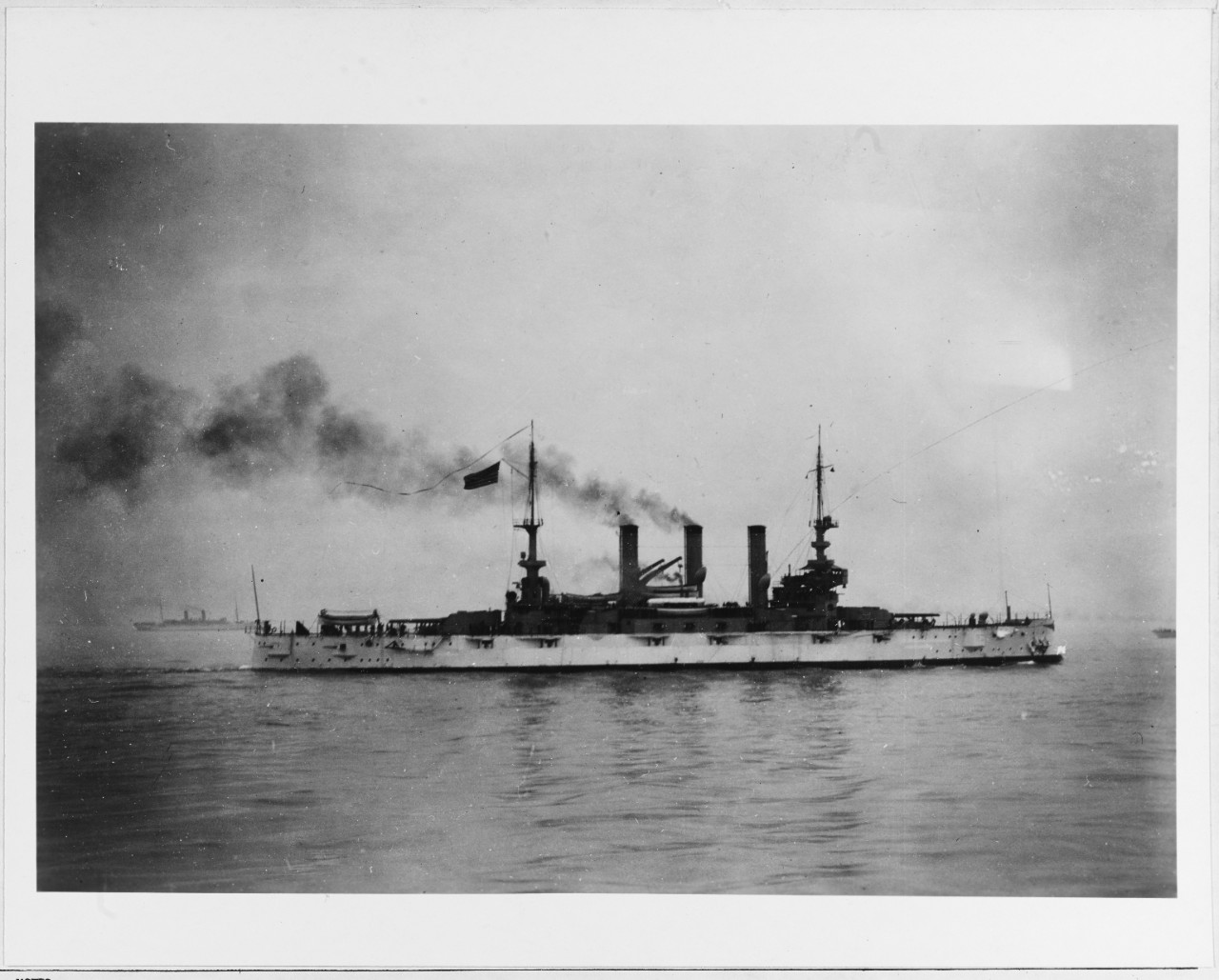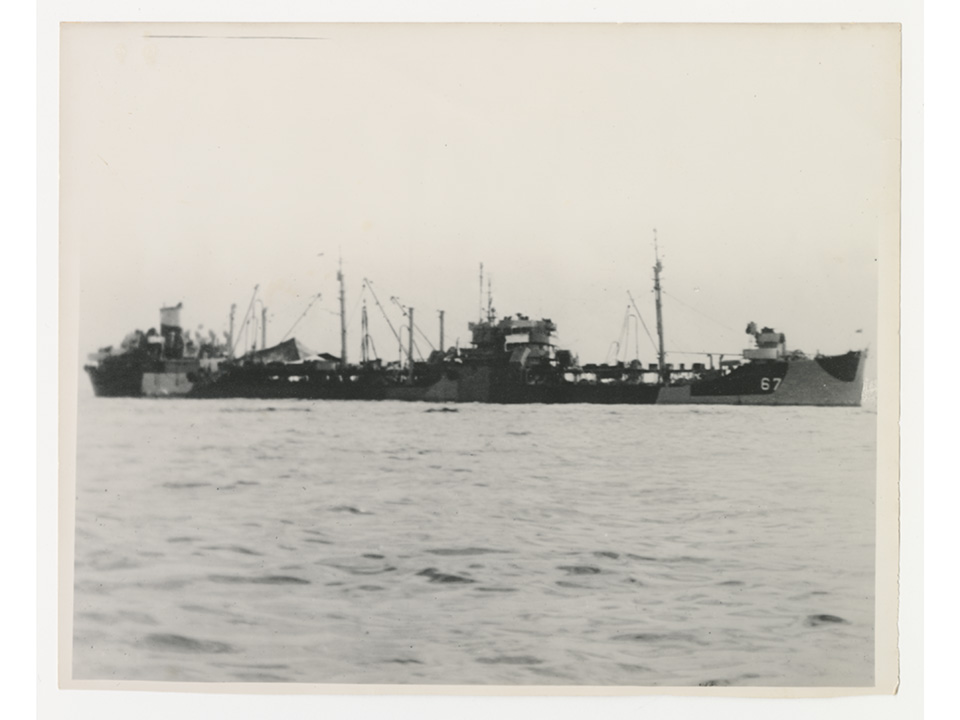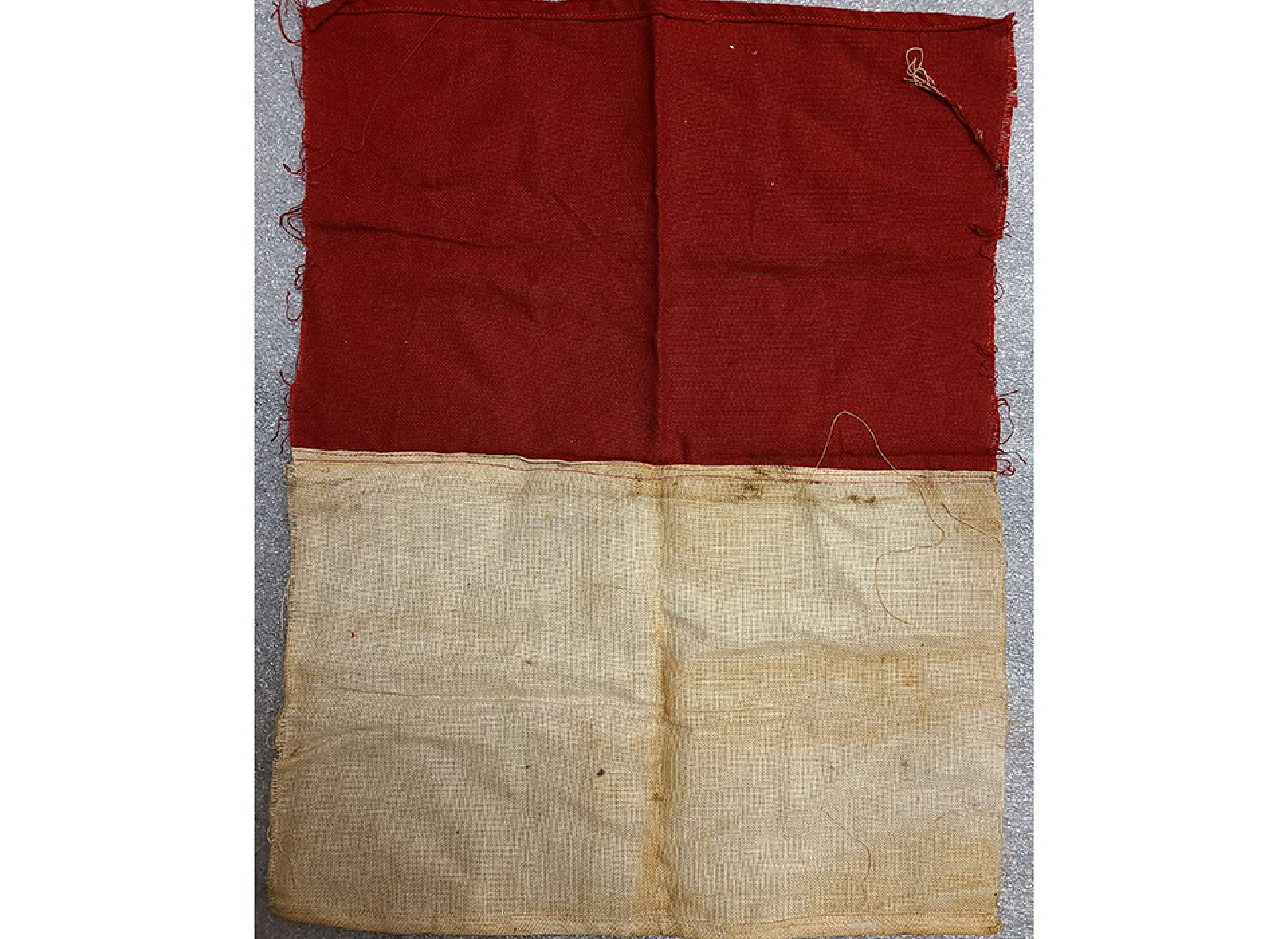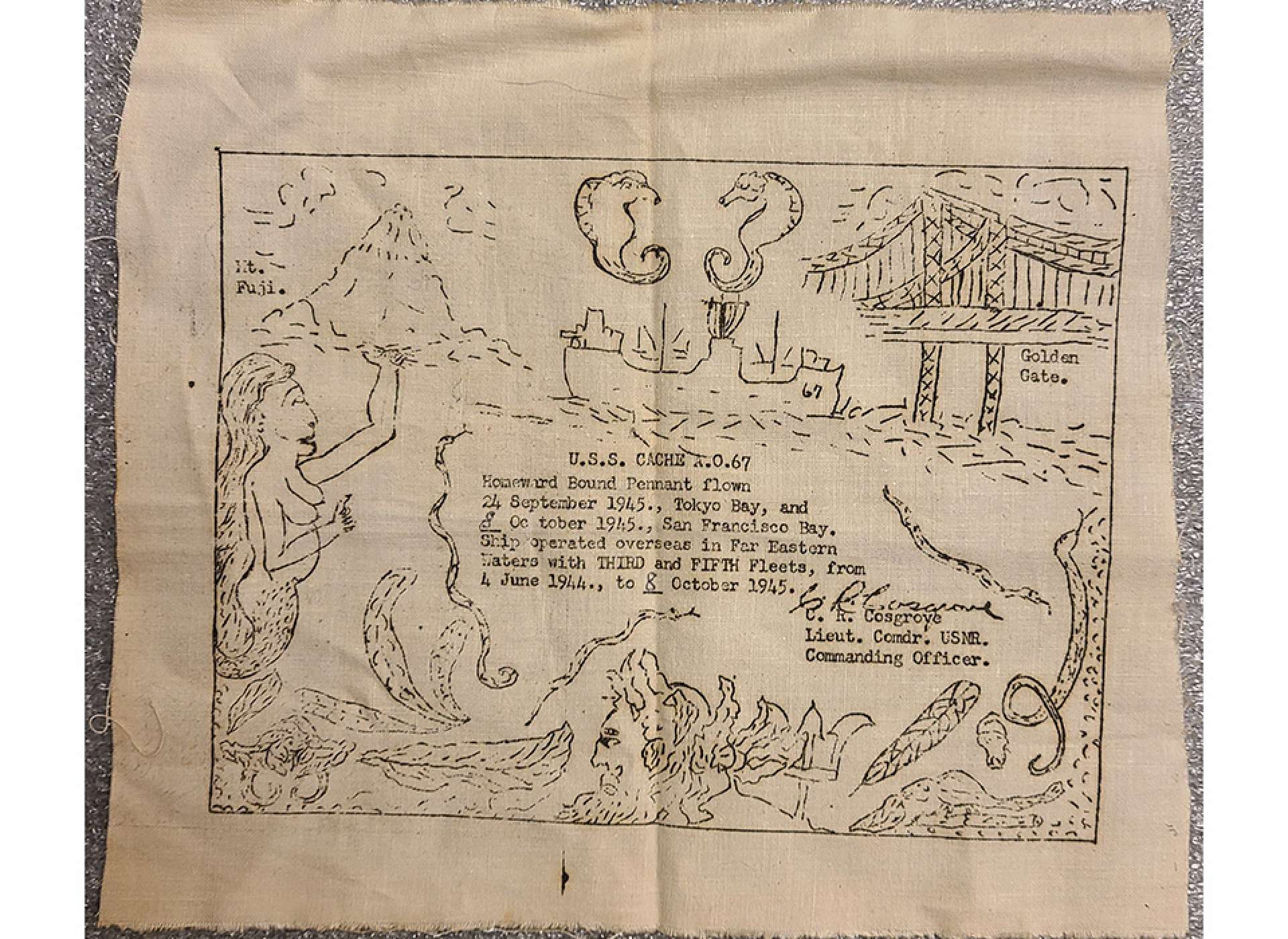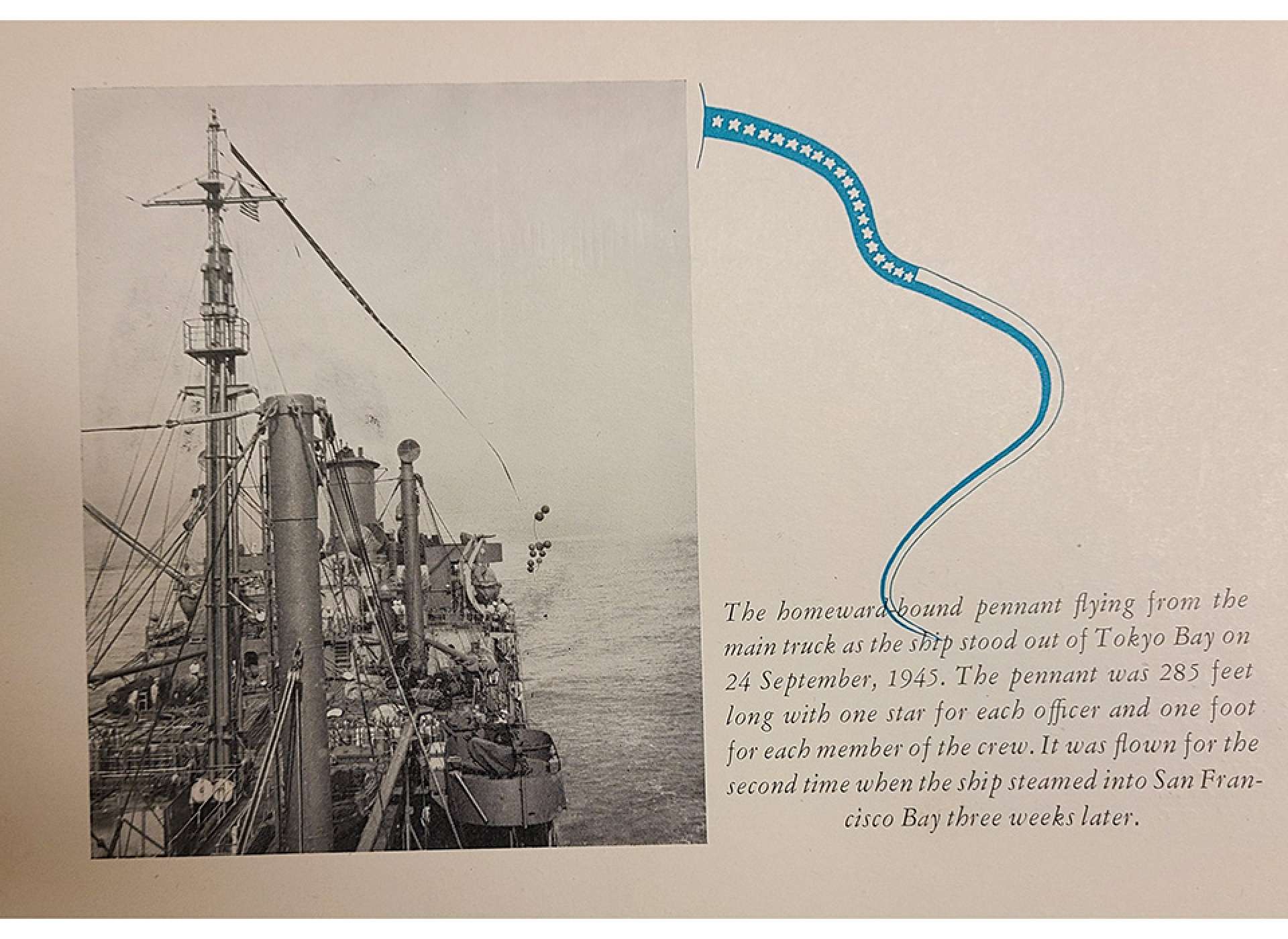The surrender of Japan marked the end of the fighting in World War II. Coming as a huge relief to the men and women serving overseas, they could finally begin to plan for the moment they really wanted—the chance to go home. As long as ships have sailed the world’s oceans, sailors have looked forward to returning home. This desire was even stronger in times of war. Some ships in the US Navy celebrated the journey home in a unique way, by flying a homeward bound pennant. These pennants were custom-made and often so long they had to be suspended by balloons to keep them from dragging in the water. They were a symbol of the end of a journey and rooted in naval tradition.
One of the Connecticut-class battleships of the Atlantic Fleet returning home at the end of the cruise of the Great White Fleet in February, 1909. A long homeward bound pennant is visible flying from the after mast above the US Ensign. Courtesy of the Naval History and Heritage Command.
Seaman First Class Thomas E. Jones first arrived aboard the USS Cache (AO-67) on May 17, 1944. At that point in the war, the Cache was a battle-scarred veteran of the fleet service force. Laid down by the US Maritime Commission as the SS Stillwater at the Sun Shipbuilding & Drydock Company in Chester, Pennsylvania, the hull was acquired by the US Navy for refit as a fleet oiler. Commissioned on November 3, 1942, Cache served in the Gulf of Mexico and later the Solomon Islands, delivering oil, supplies, and a load of PT boats before being hit by a Japanese torpedo on January 22, 1944. The damage was severe, including a hole 25 feet in diameter in the tanker’s side. The crew was able to keep her afloat, and after temporary repairs, the ship returned to the United States for a complete overhaul.
Starboard side view of the USS Cache (AO-67) in late war camouflage in the Pacific Theater. The National WWII Museum, Gift in Memory of Thomas E. Jones, 2019.065
Jones joined the Cache as the ship was nearing the end of the repairs and about to begin the next phase of its service in the Pacific theater. Fleet oilers were an important part of the US Navy surface force. At this point in the war fleet task forces roamed the Pacific imposing their will with aircraft and shell fire, but they were thirsty, requiring oil and gasoline every few days. Without the work of the oilers, the surface forces would be no more than heavily armed buoys, bobbing with the waves rather than moving through them. The Cache immediately went to work fueling ships from some of the most famous task forces to serve in the US Pacific Fleet. Between November 1942 and October 1945, the Cache traveled 129,720 nautical miles, refueling 543 different ships, transporting a total of 119,575,806 gallons of fuel oil. Just counting the oil was impressive, not to mention the hundreds of men and thousands of tons of supplies carried by the Cache in support of the Pacific Fleet.
Finally, in October 1945, after being gone for over a year, it was time for the Cache to return home. To commemorate this event, a special pennant called a “homeward bound” pennant was made and flown from the ship. The homeward bound pennant was one of the unwritten traditions in the US Navy. The American version originated in the British Royal Navy as the “paying off” pennant. After a long cruise/deployment sailing ships of the Royal Navy would return to their home port. Once the ship arrived it was decommissioned for refit and the crew was paid off—paid their wages for their service. To celebrate the journey home a long pennant was flown from the mast. The tradition of flying a long pennant at the end of a deployment was carried over to the US Navy where it was practiced unofficially until it was added to the US Navy regulations after World War II.
-

Section of the homeward bound pennant of the USS Cache, given to crew member S1c Thomas E. Jones. The pennant was 285 feet long, with one linear foot for each member of the crew. When the ship returned to the United States the pennant was taken down and divided up among the crew. The National WWII Museum, Gift in Memory of Thomas E. Jones, 2019.065
-

In addition to the section of the pennant, each sailor was given a piece of cloth explaining the homeward bound pennant of USS Cache. The National WWII Museum, Gift in Memory of Thomas E. Jones, 2019.065
-

This photograph, taken from the cruise book of USS Cache shows the 285-foot homeward bound pennant flying from the ship. The pennant is so long balloons have been tied to it to prevent it dragging in the ocean. The National WWII Museum, Gift in Memory of Thomas E. Jones, 2019.065
Until the US Navy added the homeward bound pennant into the regulations, there were not any written and agreed-upon rules for its construction and use, just guidelines. Typically, the pennant was flown when the ship had been in foreign waters for at least 12 months and only on the journey between the last port and the ship’s home port. Each pennant was constructed similar to a commissioning pennant, with a blue field with single white stars for about a third of its length, before changing to a red over white stripe that ended in a swallow tail. Once the ship made it home, the pennant was hauled down and cuttings were given to the crew or officers to commemorate the journey.
Seaman First Class Jones, was witness to a 285-foot-long homeward bound pennant flying from the main mast of the USS Cache. The pennant contained 22 white stars on a blue field, one for each officer, and 263 linear feet of red over white stripe, one foot for each member of the enlisted crew. The pennant was so long it was suspended with balloons to keep it from dragging in the water. This massive pennant was flown from the Cache as it left Tokyo Bay on September 24, 1945, and was raised again on October 8, 1945, as the ship entered the port of Los Angeles, California. When the pennant was hauled down, each officer received a section with a white star while each enlisted crewman was given a one-foot section of the red and white section. After Thomas E. Jones was discharged from the US Navy, he had a souvenir that was specific to his ship and his experience, something really unique.
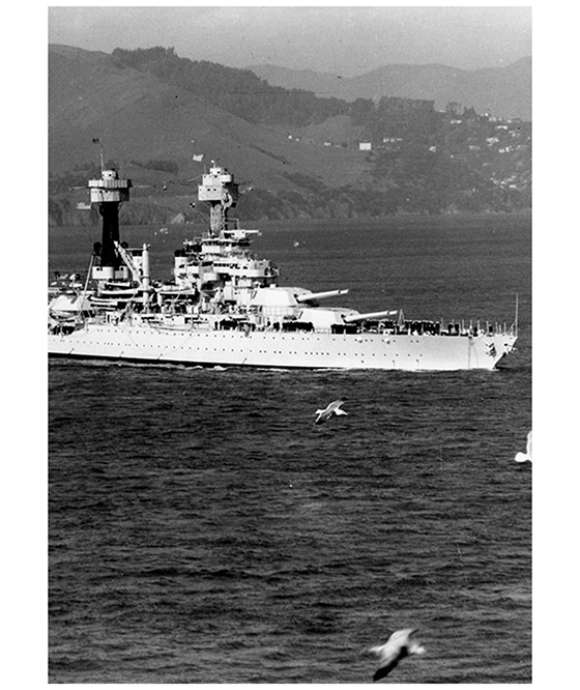
A Survivor at the Surrender, USS West Virginia
When the Japanese surrendered on September 2, 1945, the USS West Virginia was in Tokyo Bay, a symbol of the resilience of the United States Navy.
This article is part of an ongoing series commemorating the 75th anniversary of the end of World War II made possible by Bank of America.
Joshua Schick
Cite this article:
MLA Citation:
APA Citation:
Chicago Style Citation:
